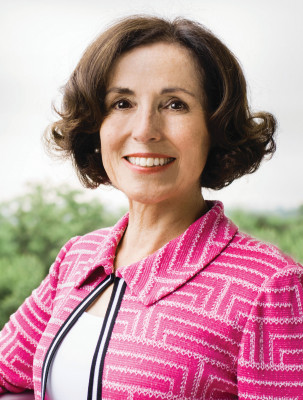Astrophysicist France A. Córdova is used to thinking about the future of scientific research in her role as the Director of the US National Science Foundation.
Next week, on 17 November, she will give a public lecture in the Science Museum to examine the 10 biggest scientific questions that will be driving the long-term research agenda of the federal agency which spends around $7.5 billion on research each year.

Dr Córdova, who was inspired by the Apollo moon landings, is the 14th director of the Foundation, the only government agency charged with advancing all fields of scientific discovery, technological innovation, and science, technology, engineering and mathematics education – a subject of particular interest to the Science Museum, which will open a spectacular mathematics gallery designed by Dame Zaha Hadid at the end of this year.
The Science Museum Group (which includes the Museum of Science and Industry in Manchester, the National Railway Museum in York and Shildon, and the National Media Museum in Bradford) is the UK’s STEM powerhouse, with the number of young people in booked educational groups rising to 507,000, with another 100,000 through our Outreach team last year.
The Group has recently been awarded the contract to run the Trans-Pennine STEM Ambassador Hub which co-ordinates the work of over 2,000 volunteers to inspire tens of thousands of school children to think positively about pursuing a STEM career.
Recently the Science Museum launched Wonderlab: The Statoil Gallery, which will eventually welcome 200,000 schoolchildren each year, who can visit for free.
In her distinguished career, Dr Córdova was the first woman to be chief scientist of NASA, the US space agency, and the Museum has hosted many renowned figures from the US space agency, from Administrator Charlie Bolden to Chief Scientist Ellen Stofan and Apollo astronaut Buzz Aldrin.
Dr Córdova’s résumé includes president of Purdue University; chancellor of the University of California, Riverside; vice chancellor for research at the University of California, Santa Barbara; and head of the astronomy and astrophysics department at Penn State.
Dr Córdova carried out her research on x-ray and gamma ray sources, and space-borne instrumentation.
The Cosmos & Culture exhibit in the Science Museum has a whole X-ray telescope on display: the Joint European X-Ray Telescope (JET-X) is the largest ever constructed in Britain.
Visit the Science Museum website to reserve your place at 10 Big Ideas in Science: A lecture by France A. Córdova.